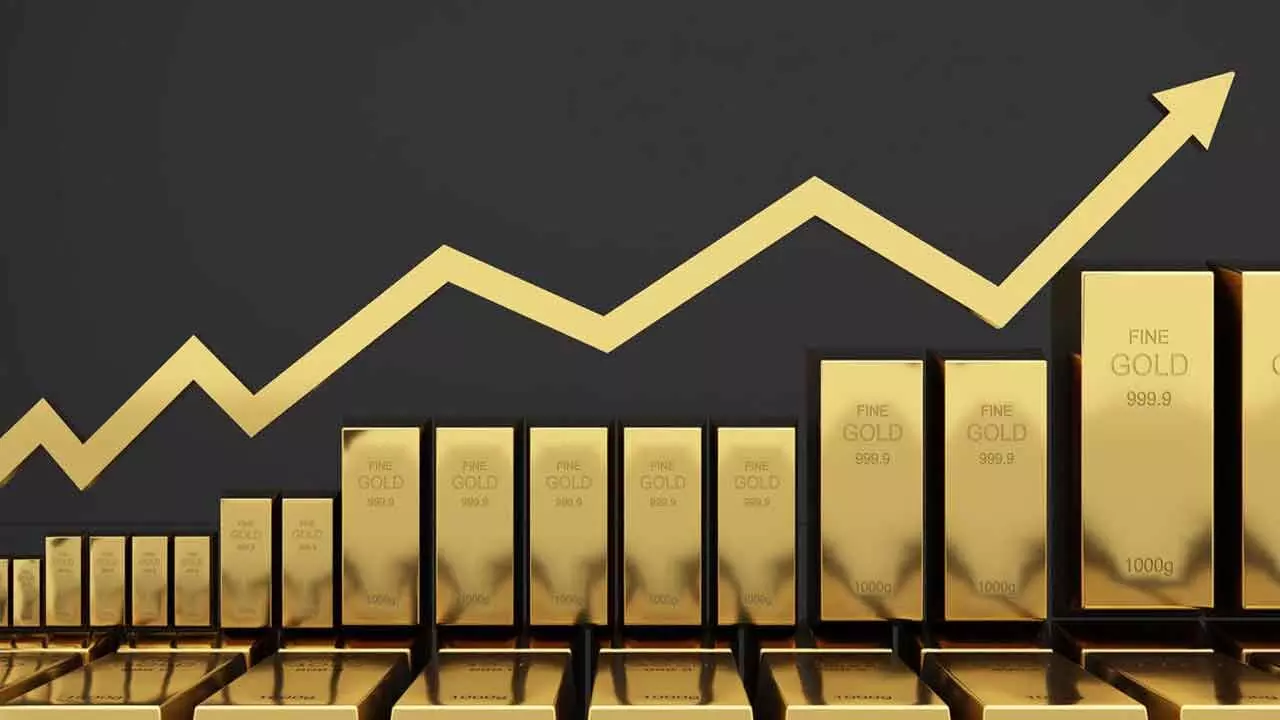Why Should We Invest In Gold During Volatile Situations?
The percentage of allocation and the mode of investment would vary depending on the individual’s needs and risk appetite
Why Should We Invest In Gold During Volatile Situations?

The tailwinds for gold are: a reducing interest rate scenario, the current volatile geopolitics, the limited supply and the changing world order but would they benefit in the immediate term could be anyone’s guess
For ages known to mankind, the only resource seen as precious or passed on is gold. Real estate comes close second, though. Many wars were waged, empires built or destroyed in pursuit of this yellow metal. It was a multi-faceted asset, acting as a medium of exchange, preserver of wealth, passage of inheritance, a sign of prosperity and even reflection of higher social standing. The olden equivalent of prosperity is the measured in the quantum of gold possession by the individual, family, community and country.
Most of the gold mined was routed to consumption i.e., to jewelry or embezzlement in the earlier days and to an extent as a medium of exchange as trade prospered. As industrial revolution kicked in portions of the gold began to be consumed for manufacturing and later in the modern days into high-tech instruments like satellites to some extent.
Of course, the course of gold took turn when the US in ’30s set the standard to their currency. As modern economics took shape and central banks began to govern the monetary systems across the world, gold became a reserve currency. This was disrupted in the 70’s as the US abandoned the gold standard. USD (United States Dollar) became a defacto reserve currency with the Bretton Woods agreement and with the west dominating the world trade. It remains the case mostly till now though there’s enough chorus gaining on legitimacy of the USD.
The events of Great Financial Crisis (GFC) of 2008 and then the pandemic in 2020 led to experiment of unusual monetary policies by the central banks. The Zero- and Negative Interest Rate Policy (ZIRP/NIRP) has insulated in the short-run the economies from their fallibilities but slowly began to erode confidence in fiat currencies. That led to the establishment and flourishing of digital currencies or cryptos.
All this while, gold continued to charm the masses and governments alike. With the de-dollarisation gaining traction, central banks began to look for safer heavens to hoard against volatility and uncertainty. They began to fall upon gold reserves, the old guard. The Russia-Ukraine war and the subsequent actions by the western governments to confiscate the USD denominated reserves of Russia turned out to be the last straw.
Central governments and their banks found a new vulnerability in accumulating reserves in USD, so they began to accelerate the diversification and to gold mostly. Also, as the de-globalisation or near-shoring picked pace, countries began to look more inward, leading to more conflicts and uncertainties. As the geopolitical tensions began to draw questions on the economic prospects, gold prices began to harden up further.
The recent 5-yr and near-term uptick in prices has limited impact on the exposures to gold ETF (Exchange Traded Funds), the electronic or digital investment in gold. Unlike during the GFC, when investors rushed to add more gold exposures through ETFs, this time there’s not much of change in the stride but there is a consistent increase of hoarders in the form of central bankers.
Another important feature of gold price is the inverse relation of gold price to the consumption i.e., jewelry purchases. While the ETF exposures remained similar and the jewelry consumption subdued, it’s the central banks which began to amass large quantities even as supply stagnated. In the post-GFC world, very few investments went into gold exploration and with the ESG (Environment, Social and Governance) investment thesis in vogue, it further reduced capex (Capital Expenditure) in this sector leading to stagnant supply.
This has resulted in greater price performance and so returns to those who had invested in gold in the last few years, particularly in the last one year. So, should one rush to invest in gold now? What needs to be understood is the dynamics of gold. Gold has a lower risk i.e., volatility when compared to most other asset classes particularly equity. Also, it’s least correlated with equity. Certainly, an exposure to gold is a good diversification to only reduce risk but add returns in a volatile situation.
The percentage of allocation and the mode of investment would vary depending on the individual’s needs and risk appetite. A 5 per cent-10 per cent allocation in a mix of financial and physical is ideal. When considered latter, should be in gold coins or bars and not in jewelry. The tail winds for gold are: a reducing interest rate scenario, the current volatile geopolitics, the limited supply and the changing world order but would they benefit in the immediate term could be anyone’s guess. So, investing based on asset allocation with a medium- to long-term would be rewarding for investors.
(The author is a co-founder of “Wealocity”, a wealth management firm and could be reached at [email protected])

